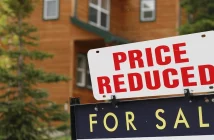The presence of first home buyers has fallen sharply this year, CoreLogic reports, but changes to First Home Grants and Loans could turn things around – or add more fuel to the fire

CoreLogic’s biannual First Home Buyer report, reveals 22.5% of all buyers in the first three months of 2022 bought a property for the first time compared to 26% in the second half of 2021.
Chief Property Economist Kelvin Davidson says as the wider housing market has turned and entered a clear slowdown phase, FHBs have not been in a position to take advantage of weaker prices and less competition.
“Some would-be FHBs may have willingly pulled back from the market with the intention of trying to enter the market at a lower purchase price later,” Davidson says.
“However, we suspect that’s only a small part of the explanation – it’s much more likely that their market share has fallen on the back of the tighter credit environment and the increased cost of servicing a mortgage.”
Housing Minister Megan Woods says recent changes to First Home Grants and First Home Loans will enable more New Zealanders able to access support to get into their first home.
“We are increasing the house price caps for the First Home Grant to align with lower quartile market values for new and existing properties. This recognises the changes in house prices over the past year.
“We are also removing house price caps entirely from the First Home Loan, to provide a greater choice of homes for prospective first home buyers. Income caps and lender requirements are sufficient to ensure that the First Home Loan is used by buyers who need support for a first home.
“We estimate that these changes, along with other changes to the eligibility criteria, will help thousands more first home buyers, with funding available for approximately 7,000 extra First Home Grants and 2,500 extra First Home Loans available every year.
“The Kāinga Whenua Loan cap will also be increased from $200,000 to $500,000 to provide more choice and opportunities for people building, relocating, or purchasing a home on whenua Māori,” Woods says.
“The house price and income caps will now be reviewed every six months to make sure they continue to stay up to date.”
New House Price Caps for First Home Grants
| Region | Existing properties ($) | New properties ($) |
|---|---|---|
| Far North District | 400,000 | 675,000 |
| Whangārei District | 600,000 | 800,000 |
| Kaipara District | 525,000 | 875,000 |
| Auckland | 875,000 | 875,000 |
| Thames-Coromandel District | 875,000 | 925,000 |
| Hauraki District | 525,000 | 525,000 |
| Matamata-Piako District | 625,000 | 625,000 |
| Hamilton Urban Area (Hamilton City, Waipā District, Waikato District) | 650,000 | 725,000 |
| Ōtorohanga District | 400,000 | 500,000 |
| South Waikato District | 400,000 | 500,000 |
| Waitomo District | 400,000 | 500,000 |
| Taupō District | 575,000 | 575,000 |
| Tauranga Urban Area (Tauranga, Western Bay of Plenty District) | 800,000 | 875,000 |
| Rotorua District | 525,000 | 525,000 |
| Whakatāne District | 500,000 | 500,000 |
| Kawerau District | 625,000 | 625,000 |
| Ōpōtiki District | 400,000 | 500,000 |
| Gisborne District | 450,000 | 500,000 |
| Wairoa District | 400,000 | 500,000 |
| Napier-Hastings (Napier City, Hastings District) | 625,000 | 825,000 |
| Central Hawke’s Bay District | 500,000 | 500,000 |
| New Plymouth District | 525,000 | 675,000 |
| Stratford District | 400,000 | 525,000 |
| South Taranaki District | 400,000 | 500,000 |
| Ruapehu District | 400,000 | 500,000 |
| Whanganui District | 425,000 | 500,000 |
| Rangitikei District | 400,000 | 500,000 |
| Manawatū District | 525,000 | 525,000 |
| Palmerston North City | 575,000 | 700,000 |
| Tararua District | 400,000 | 500,000 |
| Horowhenua District | 525,000 | 650,000 |
| Wairarapa (Masterton District, Carterton District, South Wairarapa District) | 575,000 | 800,000 |
| Wellington Urban Area (Kāpiti Coast District, Upper Hutt City, Porirua City, Lower Hutt City, Wellington City) | 750,000 | 925,000 |
| Nelson-Tasman (Nelson City, Tasman District) | 650,000 | 875,000 |
| Marlborough District | 550,000 | 575,000 |
| Kaikōura District | 700,000 | 700,000 |
| Buller District | 400,000 | 500,000 |
| Grey District | 400,000 | 500,000 |
| Westland District | 400,000 | 500,000 |
| Hurunui District | 425,000 | 500,000 |
| Christchurch Urban Area (Waimakariri District, Christchurch City, Selwyn District) | 550,000 | 750,000 |
| Ashburton District | 400,000 | 500,000 |
| Timaru District | 400,000 | 500,000 |
| Mackenzie District | 500,000 | 500,000 |
| Waimate District | 400,000 | 500,000 |
| Waitaki District | 400,000 | 500,000 |
| Central Otago District | 525,000 | 800,000 |
| Queenstown-Lakes District | 875,000 | 925,000 |
| Dunedin City | 500,000 | 675,000 |
| Clutha District | 400,000 | 500,000 |
| Southland District | 500,000 | 500,000 |
| Gore District | 400,000 | 500,000 |
| Invercargill City | 400,000 | 500,000 |
ACT Housing spokesperson Brooke van Velden says the changes will just add more fuel to the fire.
“In 2019, Treasury warned that homeownership assistance without dealing with supply could increase house prices. This is especially true now that the maximum house price to be eligible in Auckland for the grant no longer distinguishes between old and new housing, removing any incentive to grow supply.”
The new caps are informed by the lower quartile estimated values of new and existing properties in each region, but Davidson points out that FHBs do not always start on the bottom rung of the property ladder.
“The casual assumption that’s often made about FHBs is that they ‘start at the bottom’ and slowly work their way up through the different tiers/quality of property, but this is not the case in reality.
“Sure, in recent years they’ve purchased relatively fewer standalone houses and more flats/apartments, which gives access to lower prices. However, the median price paid by FHBs has still stuck comfortably above the lower quartile (bottom 25%) for all buyers – in Q1 2022, FHBs paid a median of around $750,000, higher than the all-buyer lower quartile of $615,000.”
Prices paid by first home buyers and all buyers
(Source: CoreLogic)
The drop in FHBs’ market share has occurred within the overall slowdown of the market, as total sales volumes have also fallen.
In terms of number of purchases, FHB activity in Q1 was at its lowest since 2014. Meanwhile, the proportion of FHBs in the market for the same period has fallen to 2017 levels, except for the lockdown-affected period in early to mid-2020.
“Of course, that doesn’t come as a major surprise, given housing affordability is still very stretched with between 11 and 12 years required to save a deposit in some areas of the country,” Davidson says.
“Mortgage interest rates have risen sharply and the tightening of lending criteria have bitten hard for those with low deposits and/or less disposable income. Indeed, the halving of the loan to value ratio speed limit for owner occupiers from 20% to 10% in November last year has significantly hampered first home buyers with the changes to the Credit Contracts and Consumer Finance Act not helping either.”
Property type: By property type, 73% of FHB purchases in Q1 2022 were houses, with 18% flats and 3% each for apartments, lifestyle, and ‘other’. While that might seem like a high share for houses, back in 2019, standalone homes represented about 80% of FHB purchases, hinting at the compromises (e.g. on property size/cost) that this group have had to make to keep accessing the market.
FHB median price: The median price paid by FHBs in Q1 2022 was $752,007, up from $680,000 in 2021, but still well below the median of $860,000 for all buyers so far this year. Over the past four to five years, the FHB price remained fairly stable around 91 to 92% of the price paid by all buyers. In 2022, this ratio has slipped to 87%, a sign Davidson says suggests that FHBs haven’t been able to keep pace with the wider market.
Where FHBs are most active: The national trend that shows a drop in the proportion of FHBs has played out across Auckland, Hamilton, Tauranga, wider Wellington (i.e. combined City, Lower Hutt, Upper Hutt, Porirua), Christchurch, and Dunedin.
Admittedly, across Wellington FHBs still account for more than 30% of activity, which is about two percentage points higher than the long-term average for that area. Dunedin’s figure of about 25% is also still above normal, as is Hamilton, and Christchurch. However, Auckland’s FHB share (25%) has pretty much returned to normal in Q1 2022, while Tauranga’s figure is also back down to average.
Each of the main centres saw FHBs pay a median price in Q1 2022 that was lower than the median paid by all buyers. The gap was most prominent in Auckland, where FHBs paid a median of $1.04million compared to the overall figure of $1.23million. Wellington FHBs paid the second highest median price ($890,000), followed by Tauranga ($800,000), with Hamilton around the $750,000 mark. First time property owners in Christchurch and Dunedin paid about $600,000 to enter the market.
FHB outlook: As the cost to rent becomes more favourable than buying due to the sharp rise in mortgage rates, many potential FHBs may choose to sit on the sidelines for longer, Davidson suggests.
“Some FHBs will no doubt be able to secure some bargains in a market where the supply/demand balance has tipped in favour of buyers and the looming relaxation of the CCCFA rules may help too.
“But this won’t be enough for plenty of others, who will continue to struggle with the loan-to-value ratio rules and the higher mortgage rates. We anticipate the overall proportion of FHBs in the market may stay more subdued this year.”
Key insights from this report include:
- In the first quarter of 2022, FHB market share of all residential purchases fell to 22.5%, still higher than the long-term average of 21.8%, but down sharply from 26% at the end of 2021.
- A FHB requires an average of 11.5 years to save a home deposit.
- Auckland FHBs spent a median of $1.04 million in Q1 2022 to get into the market compared to those in Invercargill (for example), who spent $425,000.
- Standalone houses accounted for 73% of FHB purchases in Q1 2022.
- FHBs paid a median price of $752,007 in Q1 2022, up from $680,000 in 2021, but well below the $860,000 median paid by all buyers to date this year.









